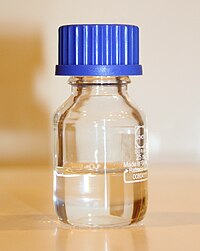
Unraveling the inhibitory effect of dihydromyricetin on heterocyclic aromatic amines formation.
Sign Up to like & getrecommendations! Published in 2018 at "Journal of the science of food and agriculture"
DOI: 10.1002/jsfa.8682
Abstract: BACKGROUND Heterocyclic aromatic amines (HAAs) are mutagens and rodent carcinogens. Flavonoids have attracted considerable attention for development into effective inhibitors against the formation of genotoxic HAAs in thermally processed foods. RESULTS The inhibitory effect of… read more here.
Keywords: effect dihydromyricetin; formation; effect; aromatic amines ... See more keywords

Presence of acrylamide and heterocyclic aromatic amines in breaded chicken meat products and dietary exposure of Turkish population from Ankara based on the food frequency questionnaire study
Sign Up to like & getrecommendations! Published in 2017 at "European Food Research and Technology"
DOI: 10.1007/s00217-017-2976-1
Abstract: This study investigated the acrylamide (AA) and heterocyclic aromatic amines (HAAs) exposure, according to age groups, estimated using a food frequency questionnaire study in combination with analytical data on AA and HAAs levels of chicken… read more here.
Keywords: exposure; study; aromatic amines; acrylamide heterocyclic ... See more keywords

Formation of heterocyclic aromatic amines with the structure of aminoimidazoazarenes in food products.
Sign Up to like & getrecommendations! Published in 2019 at "Food chemistry"
DOI: 10.1016/j.foodchem.2019.126128
Abstract: Thermal food processing has many beneficial consequences, although it also produces some unintentional undesired effects, such as the formation of potentially mutagenic and carcinogenic substances. Among them, the formation of heterocyclic aromatic amines (HAAs) has… read more here.
Keywords: amines structure; formation heterocyclic; aromatic amines; formation ... See more keywords

Antimutagenic effect of an Asclepias subulata extract against heterocyclic aromatic amines commonly found in cooked meat and its heat stability.
Sign Up to like & getrecommendations! Published in 2020 at "Food chemistry"
DOI: 10.1016/j.foodchem.2020.126725
Abstract: The antimutagenicity of an extract from the medicinal plant Asclepias subulata (ASE) against heterocyclic aromatic amines (HAAs) commonly found in cooked meat, as well as its stability to heat treatment (HT), was evaluated. HT (180 °C/3 min)… read more here.
Keywords: heterocyclic aromatic; effect; asclepias subulata; ase ... See more keywords

Is oven bag really advantageous in terms of heterocyclic aromatic amines and bisphenol-A? Chicken meat perspective.
Sign Up to like & getrecommendations! Published in 2021 at "Food chemistry"
DOI: 10.1016/j.foodchem.2021.129646
Abstract: Herein, the effects of oven bag use belong to different brands on heterocyclic aromatic amine (HAA) formation and bisphenol-A (BPA) migration in cooked chicken meats (breast and leg) were investigated. Samples were also analyzed in… read more here.
Keywords: bag use; oven bag; bag really; meat ... See more keywords

Effect of turmeric on the reduction of heterocyclic aromatic amines and quality of chicken meatballs
Sign Up to like & getrecommendations! Published in 2021 at "Food Control"
DOI: 10.1016/j.foodcont.2021.108189
Abstract: Abstract Herein, the formation of heterocyclic aromatic amines (HAAs) in chicken meatballs formulated with different levels of turmeric powder (0.5 and 1%) and cooked at different temperatures (150, 200, and 250 oC) was investigated. We… read more here.
Keywords: heterocyclic aromatic; turmeric reduction; aromatic amines; chicken meatballs ... See more keywords

In silico prediction of Heterocyclic Aromatic Amines metabolism susceptible to form DNA adducts in humans.
Sign Up to like & getrecommendations! Published in 2019 at "Toxicology letters"
DOI: 10.1016/j.toxlet.2018.10.011
Abstract: Heterocyclic Aromatic Amines (HAAs) are environmental and food contaminants that are classified as probable or possible carcinogens by the International Agency for Research on Cancer. Thirty different HAAs have been identified. However the metabolism of… read more here.
Keywords: dna; metabolism; aromatic amines; form dna ... See more keywords

Identification of Precursors and Formation Pathway for the Heterocyclic Aromatic Amine 2-Amino-3-methylimidazo(4,5-f)quinoline (IQ).
Sign Up to like & getrecommendations! Published in 2020 at "Journal of agricultural and food chemistry"
DOI: 10.1021/acs.jafc.0c02869
Abstract: Food processing is responsible for the destruction of some health hazards, but it is responsible for the formation of new ones. Among them, the formation of heterocyclic aromatic amines (HAAs) has received a considerable attention… read more here.
Keywords: amino methylimidazo; methylimidazo quinoline; precursors formation; formation ... See more keywords

Hierarchical Porous Nanocellulose Aerogels Loaded with Metal-Organic Framework Particles for the Adsorption Application of Heterocyclic Aromatic Amines.
Sign Up to like & getrecommendations! Published in 2022 at "ACS applied materials & interfaces"
DOI: 10.1021/acsami.2c03800
Abstract: This work overcomes the long-standing challenge of cumbersome pretreatment methods in the detection of heterocyclic aromatic amines (HAAs). A UiO-66/nanocellulose composite aerogel (CMC-CNC-UiO-66) with layered pores and low density prepared by a self-cross-linking method is… read more here.
Keywords: adsorption; aromatic amines; heterocyclic aromatic; cnc uio ... See more keywords

Pyridine vs N-Hydrogenated Pyridine Moieties: Theoretical Study of Stability and Spectroscopy of Nitrogen-Contained Heterocyclic Aromatic Compounds and Graphene Nanoflakes
Sign Up to like & getrecommendations! Published in 2018 at "ACS Omega"
DOI: 10.1021/acsomega.8b01759
Abstract: Nitrogen is one of the most common heteroatom appearing in heterocyclic aromatic compounds (HACs) as well as the frequently applied dopant in graphene nanoflakes/nanoribbons. The pyridine moiety is an intuitive and stable common feature of… read more here.
Keywords: hydrogenated pyridine; graphene nanoflakes; aromatic compounds; pyridine moiety ... See more keywords

Unfolding the complexation and extraction of Am3+ and Eu3+ using N-heterocyclic aromatic diphosphonic acids: a combined experimental and DFT study.
Sign Up to like & getrecommendations! Published in 2019 at "Dalton transactions"
DOI: 10.1039/c9dt03422f
Abstract: Phosphonate based ligands are well known for the extraction of 'f' block elements. Three N,O-donor N-heterocyclic aromatic diphosphonate ligands were evaluated in the present work for the extraction/separation studies of Am3+ and Eu3+. Complexation studies… read more here.
Keywords: extraction; am3 eu3; diphosphonic acid; complexation ... See more keywords